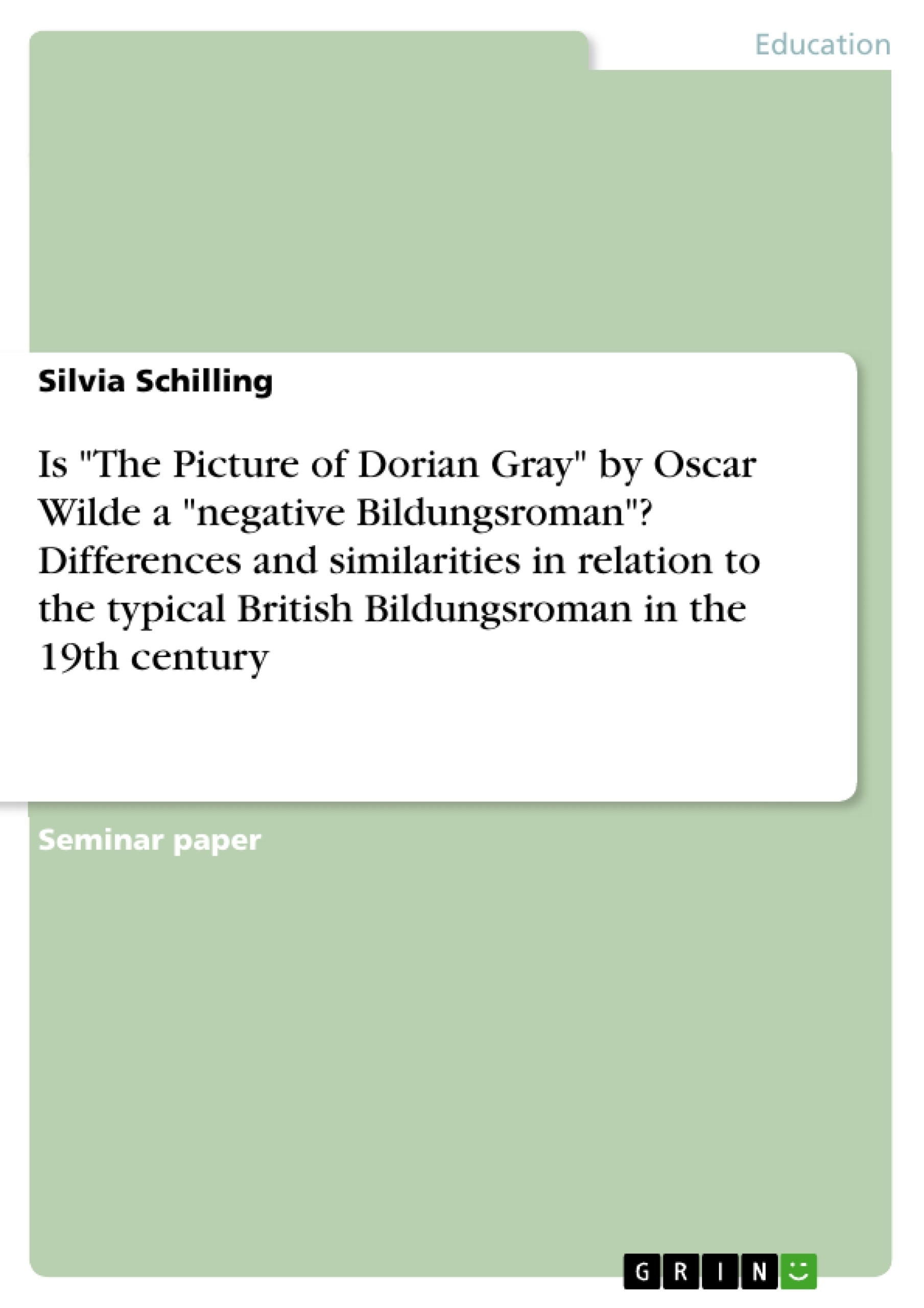This term paper concerns itself in detail with the question if the term "negative Bildungsroman" is appropriate to describe Oscar Wilde's novel The Picture of Dorian Gray. As a first step, the terms "Bildungsroman" and "negative Bildungsroman" are defined and distinguished from another. Then, general differences and similarities between the novel and a typical British Bildungsroman of the 19th century are established, for example looking at narrative perspective and the childhood of the protagonist.
Now, a closer look is taken at the novel itself and especially at the development of Dorian Gray. Questions discussed in this chapter include the impact of Sibyl Vane and her suicide on Dorian's development as well as the influence of the characters Basil Hallward and Lord Henry Wotton. After establishing in which ways Dorian's development is a negative one, the conclusion sums up the the tension between this novel and the typical Bildungsroman as well as all the aspects that make this novel "negative".
Inhaltsverzeichnis (Table of Contents)
- Introduction
- The <
> - Differences and similarities between The Picture of Dorian Gray and the typical British Bildungsroman in the 19th century
- Narrative Perspective
- Childhood
- Passivity
- Dorian's deformation
- The Beginning of the End
- Dorian <
> - Further deformation
- Basil's murder
- Dorian's death
- Evaluation of Dorian's development
- Conclusion
Zielsetzung und Themenschwerpunkte (Objectives and Key Themes)
This work examines the novel The Picture of Dorian Gray by Oscar Wilde through the lens of the Bildungsroman genre. It analyzes how the novel deviates from the traditional British Bildungsroman model, presenting a unique and compelling “negative Bildungsroman.” The analysis explores the distinctive narrative perspective, the depiction of childhood, and the protagonist's unique development.
- The evolution of the Bildungsroman genre in the Victorian era, especially its transformation in England.
- The characteristics and significance of the “negative Bildungsroman” and its contrast to the traditional Bildungsroman.
- An analysis of Dorian Gray's development as a protagonist, considering his unique and unusual character trajectory.
- The role of aesthetics, morality, and social influence in shaping Dorian Gray's life and the impact of his choices.
- The narrative perspective's role in shaping the reader's understanding of Dorian Gray and his journey.
Zusammenfassung der Kapitel (Chapter Summaries)
The first chapter introduces the concept of the Bildungsroman and its variations, specifically highlighting the “negative Bildungsroman” which is a key concept for analyzing The Picture of Dorian Gray. The chapter explores the traditional Bildungsroman model and its characteristics, highlighting how this model evolved in England during the Victorian era.
The second chapter dives deeper into the concept of the “negative Bildungsroman,” outlining its key characteristics and exploring how it reflects the changing social and moral landscape of late Victorian England. The chapter analyzes the role of aesthetics, morality, and social influence in shaping the protagonist's negative development.
Chapter three examines the specific differences and similarities between The Picture of Dorian Gray and traditional British Bildungsroman novels. It compares the novels in terms of their narrative perspective, the depiction of childhood, and the role of passivity in the protagonist's development.
Chapter four, which is not included in this preview, likely dives further into Dorian Gray's deformation and explores the specific events and influences that contribute to his downfall. This chapter might also examine the consequences of his actions and the impact they have on himself and others.
Schlüsselwörter (Keywords)
The main keywords and focus topics of this work include: Bildungsroman, negative Bildungsroman, Victorian literature, The Picture of Dorian Gray, Oscar Wilde, narrative perspective, character development, aesthetics, morality, social influence, and the influence of societal norms on literary expression.
- Citar trabajo
- Silvia Schilling (Autor), 2014, Is "The Picture of Dorian Gray" by Oscar Wilde a "negative Bildungsroman"? Differences and similarities in relation to the typical British Bildungsroman in the 19th century, Múnich, GRIN Verlag, https://www.grin.com/document/353113



